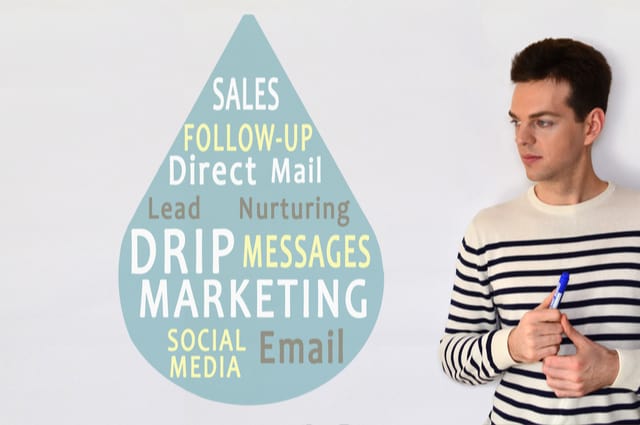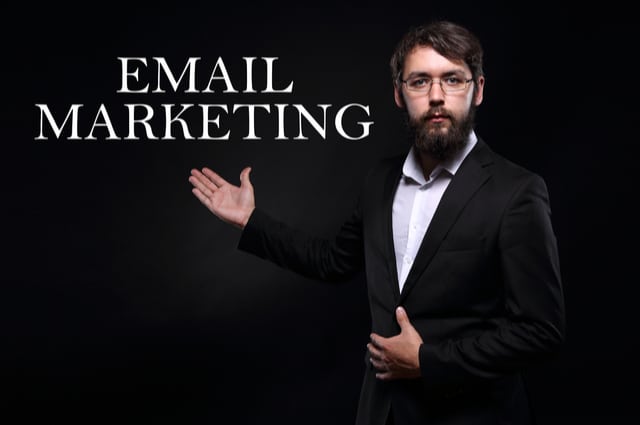Want an effective content marketing strategy and the best content marketing tools?
Using Content Optimization Tools is the new smart. In today’s digital era, content marketing tools are strategically used in the content creation process of business-to-business (B2B) and business-to-customer (B2C) marketing to optimize leads and customer engagement.
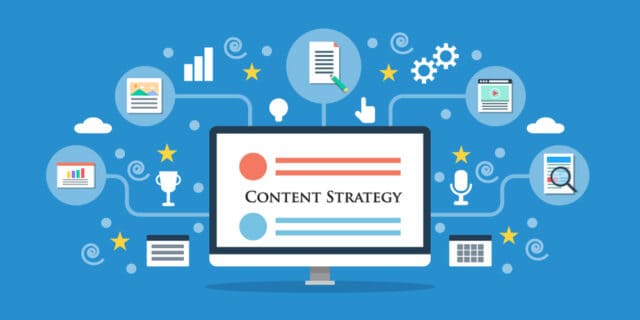
Marketing teams have become increasingly customer-centric. Content marketers are prioritizing highly-targeted content, which customers appreciate. Furthermore, content management tools have become a potential game-changer in providing a competitive advantage to your brand.
Powerful content ideas are the new means of survival to stay in the competition

When done right, content marketing campaigns today have the power to define and develop the relationship between the brand and the customer.
Based on content marketing statistics released by HubSpot, 70% of businesses are actively investing in content marketing tools, out of which close to 40% of marketers believe that content optimization is a crucial part of building their overall marketing campaigns.
Content marketing is a creative medium to share targeted information about your brand, products, services, and expertise to potential customers.
The most common and primary media sources used by marketers to develop their content strategy include blogs, videos, infographics, case studies, eBooks, white papers, checklists, interviews, email marketing tools, and other forms of media and project management tools.
Businesses that are not using google analytics, search engine optimization, or other content tools may face the challenge of being swallowed by the large fish in the market today.
To survive the fierce competition, content marketers have to begin by maintaining better customer data, better technology, advanced content marketing tools, advanced google analytics, keyword research—in other words, a better-developed digital network.
Furthermore, producing attractive written, downloadable, and visual content will help establish a sound content marketing system that will eventually be a game-changer.
Let’s look closely at the recipe of some of the best content ideas.
The key is in the art of communication: Understanding content marketing

Content marketing is a marketing approach that creates strategic techniques to develop and distribute curated and unique content for prospective and existing clients.
With the help of valuable content marketing tools, content creation can attract and build a targeted audience, increase the number of website visitors, generate leads, and drive profitable sales.
Content analytics tools make the best use of email marketing, blog post, newsletters, podcasts, social media posts and videos, infographics, texts, and other forms of media.
Using an advanced content marketing tool increases the chance of adding value to your brand while also building trust among the audience. Expert content creators usually consider the long-term goals of the brand to develop relevant and interesting content for the target audience.
The most sought-after content marketing tactics optimizes brand image and reputation, guides customers by providing targeted information.
As such, your content marketing strategy should leverage customer action and help attract prospective customers while also converting existing customers into a loyal client base.
Let’s look at the statistics for some of the primary forms of content marketing media preference to help you improve your strategy. Considering the figures, you may evaluate which technique may work best for your business—
Blog post: In 2020, about 89% of content marketers used blog posts as strategic content marketing.
Podcasts: 75 percent of Americans aged 12 and above listen to podcasts on a monthly basis, with 39 percent of men and 36 percent of women.
Videos: The most frequent marketing tactics are advertising videos and brand storytelling, with 87 percent of video marketers claiming that video has improved website traffic and 80 percent claiming that video has significantly boosted sales.
Facebook: Facebook is the primary content distribution channel for social media management today.
LinkedIn: In 2019, over 87% of video content marketers regard LinkedIn as one of the effective video marketing tools to gain web traffic.
Instagram: 28% of video marketers plan to include InstagramTV in their 2020 video marketing strategy to optimize content. It is the second-highest ROI social channel among content marketers.
Pinterest: 25% of social media marketers at B2B companies used Pinterest to market their businesses; while 30% of social media marketers at B2C companies use the platform for growth marketing.
(Source: https://www.hubspot.com/marketing-statistics)
Let’s discuss the elephant in the room—the Content

Content marketers typically rely on keyword research, google analytics, content marketing tools, google ads, and other such content tools to produce engaging content. However, there are some fundamental guidelines most content creators swear by. Let’s explore a few—
- Provide content that consumers love to read and spend for.
- Add value to your web pages. Consider an ad that is so good; it doesn’t get skipped. Creating a skating video for skaters won’t get cut because you are offering them something they value.
- Craft content that is responsive and easy. Hint, avoid jargon.
- Include a clear CTA. A clearly defined CTA guides the visitor on what they should do next. In the end, you want people to hit on the ‘purchase’ button.
- Customize content that is tailored to each stage of the sales cycle, from awareness through a decision or buys. Producing content for every step in the buyer’s journey will simplify the content process and also help you to refine your content ideas.Let’s consider how to create compelling content in each stage of the sales cycle to engage multiple users and add high search volume—
Awareness Stage
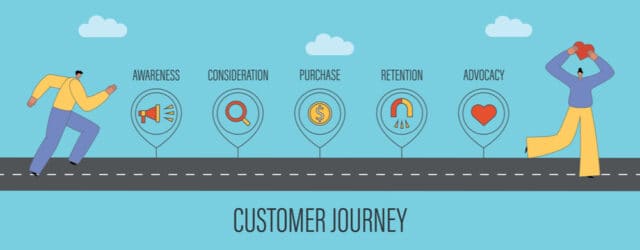
This is where the buyer’s journey begins. At this level, the highlight of your content should be your brand. Remember, you don’t want them to buy yet.
Therefore, content at the awareness stage should be informing and educational. Prioritize the customer’s pain points. People only need to know you exist, so give them that.
The best content format for the awareness stage is blog articles, videos, newsletters, or e-books.
For instance, if you are starting a business of Pashmina woolen products, as a competitive content marketer you could start blogging on “Types of Pashmina wool and which one is the best for you.”
Or, if you are opening a bicycle store, you may want to write on “How to choose the best bike for hiking and other outdoor activities.”
Consideration Stage

Okay, so many people know your brand and have shown interest, and now you want them to buy. However, you have to lure them into buying when they are still considering your products.
At the consideration stage, your content should offer a hybrid range that guides them and helps them. Take your audience through an enlightening tour of the many features, functions, expertise, and benefits your products have to offer. Your goal is to educate the reader based on user behavior.
As an expert content marketer, you could use the following media formats along with targeted keyword research to stimulate the site’s SEO ranking: case studies, how-to articles, videos, checklists, or worksheets for marketing teams.
For instance, if you are selling wooden gazebos, you may want to make a “how-to video on installing your own gazebo.”
Closing stage or decision stage
Well, this could be the favorite part of the content process. We guarantee you will enjoy making content for this stage as this is the part where people want to buy your products.
Your content marketing strategy has to be consistently compelling until the last step of the buyer journey. At the closing stage, your content needs to shift focus from the services and products and instead zoom in on sales.
Your content creation should highlight your average size of orders, order frequency, and sales capacity. The best content format for the closing stage is therefore user-generated content, buyer’s guide, product video, case studies, and research reports.
Learn from the best: Inspiring content marketing examples
Example 1: IKEA’s Hilarious Bernie Chair Look

We all know this look of Senator Bernie Sanders, snuggled in anorak and mittens at the time of President Joe Biden’s inauguration ceremony.
This image of the senator was widely shared and photoshopped in ridiculous memes on the internet in 2021.
Ogilvy Greece did not shy away from the norm and used it for Ikea’s promotion.
Why is this a good example of interactive content marketing?
- It is creative
- It draws positive attention by choosing one of the most trending photos
- It is a perfect example of how speed is sometimes better than perfection—quick-thinking paid off well
- It took a beneficial advantage of a viral moment.
Example 2: Burger King’s emotional appeal
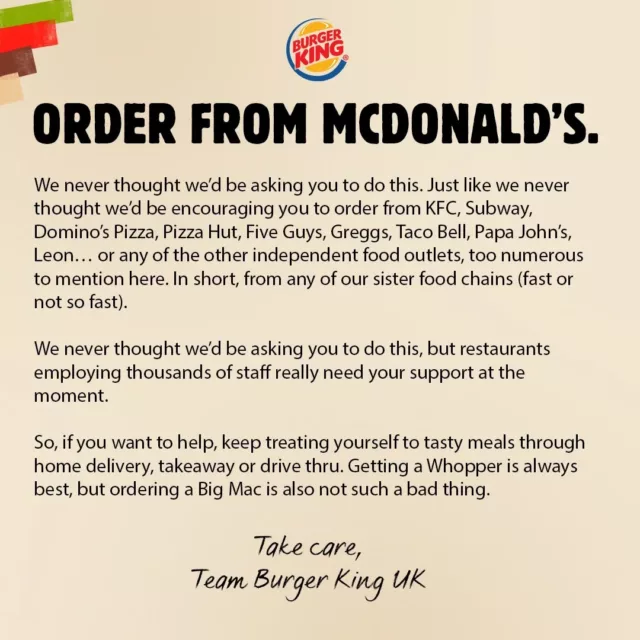
Burger King made this emotional appeal during the pandemic and lockdown in support of restaurant chains and independent businesses. Most unexpectedly, Burger King appealed to people to buy from McDonald’s. It struck a chord with the public.
Why is it an excellent example of social media content marketing?
- It is unexpected and shocking and hence draws strong attention.
- It brings out emotion and resonates with the public.
- It is refreshing to see that brand pride is put aside to make way for solidarity instead.
- It is interesting and inspiring.
Example 3: Free In-Garage Delivery by Amazon

This e-commerce and technology giant is difficult to beat. Amazon’s recent ad about sharing a digital key to your garage door with your Amazon driver for safe package delivery is brilliant marketing. It is an apt solution for customers who miss the standard delivery hours due to work.
Key takeaways of this type of video content marketing
- It addresses the pain points of consumers about potential theft.
- It is a well-studied outcome of user behavior and offers a solution.
- It gives the impression of an easy and hassle-free solution—notices the look on the delivery man’s face and triumphant music.
- It shows that the brand cares about your well-being.
Let’s get you started: How to create your content marketing strategy?
In the beginning, the building process of content marketing may seem intimidating. However, it is part of your branding, so as a content marketer, trust us it is fun and manageable for you and your team members. Let’s begin with this step-by-step process—
Step 1: Define your target audience
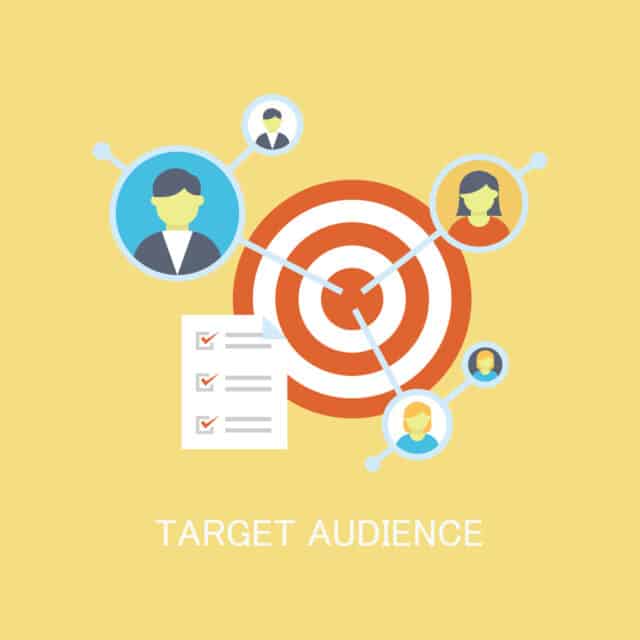
Well, a tailor cannot start working on a dress without knowing the fit and the make of the person the tailor is making it for. Similarly, you can only create meaningful content when you know your target audience. So, how do you determine the right audience for your content?
- Firstly, you need to be aware of their pain points or challenges, preferences, and priorities.
- Secondly, if your business has various verticals, decide on one or two of those segments.
- Finally, evaluate the profiles of your target audience members and potential customers before you start working on the content. Do thorough keyword research. This part is also known as evaluating buyer persona.
Furthermore, it’s wise to test various content types and media forms before you deliver the content. It’s good to create content that suits all kinds of customers and caters to the needs of more than one type of customer or viewer.
Step 2: Choose a media format
In the above section, we have discussed at length the various primary content media formats that content marketers use to optimize google search results.
While determining the right content marketing tools, remember your media choice should also reflect the current stage of the sales cycle for which you are creating content. Consider the topics you intend to highlight. Furthermore, you should prioritize the following questions—
- Which media format will best suit your brand image?
- Which format will optimize your brand value in the best way?
- What works in the best way to showcase your brand—blog posts, infographics, or videos?
- Which media format suits your budget?
Step 3: Write, edit, and proofread
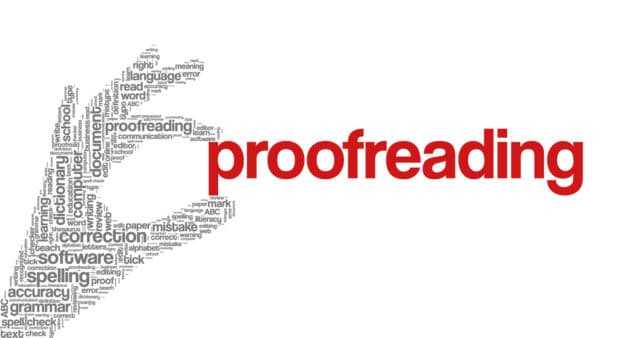
At this stage, your content will be coming to life—and you know when you give birth to something, the aftermath is never easy.
The content you create for your landing pages will reveal more about your brand than you can imagine. So, you may want to hire internal or external help to develop powerful and sound content. Hiring a professional proofreader will bring the shortcomings under the lens.
Furthermore, you might want to follow some best practices. It is also essential to be realistic about the content, so be experimental with the first lot you send, take notes of people’s reactions, analyze target keywords and google analytics. Introspect what you could better.
Step 4: Determine your distribution channels
Okay, so you have taken measurements of the dress, stitched it, and now it’s time to deliver the dress to your client. So, do you call the client or send her an email?
Your material is all set to go. But how will it get to the intended audience? Will you make it available on your company’s website? Or will you send your consumers handpicked emails? Your own website or social networking networks such as Facebook, Instagram, LinkedIn, and Twitter are examples of distribution methods.
You may start by locating your audience and choosing a distribution format and schedule that supports such demographic details.
Step 5: Create a schedule

It’s time to line up an easy and workable content marketing plan. Be careful; this may tend to get overly ambitious.
After you know your target customers and media formats, you may want to decide on a short-term content editorial calendar that works roughly for 3-6 months. Build a plan based on your content elements, your budget, and resources.
At this stage, consider the following questions —
· What will be your publishing frequency?
· What timeline have you set for your brand’s growth?
You don’t have to have the ideal answers to all these questions; you can change them later in your strategy. Furthermore, you might also want to take into account the time you need to create each piece of content.
This will assist you in creating a realistic schedule and establishing a personal vision. You may want to learn by trial and error with a free tool.
Step 6: Choose a content management system
Content management system, also known as CMS, is a time saver that will help you create, publish, distribute, manage, and track your content. Furthermore, having a sound system in place will also help you with content and google analytics.
Remember, to choose content marketing tools with a responsive CMS that works well for your company and team members, you don’t need to be an established player who has everything sorted out.
CMS will adapt and evolve your content creation based on your hub and its expectations. In short, it will help you to bring out the best from your brand by conducting competitor research.
Taking leads from here, let’s move on to the next section of our article—analyzing a content marketing tool—
How to choose a Content Management System that fulfills your business needs?

Just as we mentioned before, it does not matter if you are an established market player or a novice. It also does not matter if you own a corporate website or an e-commerce website—the purpose of a powerful content management system (CMS) is to help you optimize your brand’s content, improve overall functionality and help you achieve success.
Today, the choice is abundant for CMS platforms. Each offers a unique set of features suited for different business purposes. Therefore, to decide on the ideal CMS for your business, you need to be aware of your needs and goals.
For instance, you want to boost your website content for SEO. In such a case, you will look for a project management tool that features built-in free tools for SEO.
So, let’s begin with some of the must-have features to consider before you make the final choice—
In-built SEO tools
The option of having built-in SEO tools in your CMS will improve your content research and will increase your website’s ranking. This is a must-have tool to consider if you want to avoid low competition keywords.
High-performance dashboard
The admin dashboard is the backbone of every CMS. Ensure your CMS allows you to manage all your tasks such as google search console, scheduling, monitoring, installing, reviewing analytics, etc.
A broad selection of themes
Depending upon your website, you want to have a CMS platform that offers a wide selection of themes. This is a favorite tool to look out for if you want to make your site look consistent. Consider a CMS that has free and downloadable themes.
Multilanguage Content Creator
This tool is essential if you have a diverse audience speaking different languages. A Multilanguage content creator will help not only to create pages in other languages but will also help you manage and test them.
Variety of templates
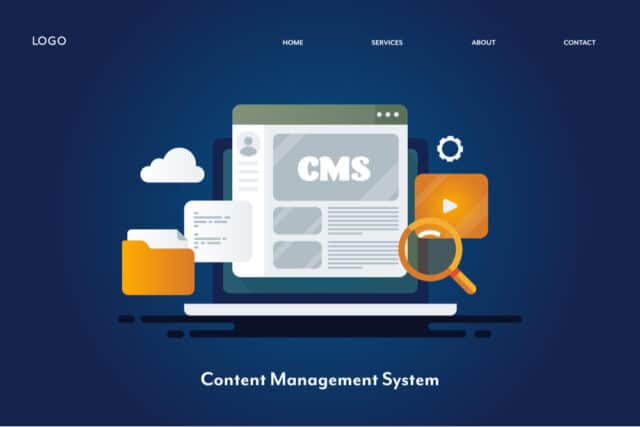
This is also a valuable tool to consider before deciding on a CMS. A good choice of templates will simplify your publishing process as you won’t have to draft a post or page from scratch.
Analytics
This feature will significantly help you evaluate buyer persona. CMS with advanced analytics will help analyze viewers’ impressions with content, their location, the device they are using, etc.
Integrated social media capabilities
This tool will help you to refine your social media management. A CMS that comes with social media integration will help you to schedule and publish posts on your social media accounts with the help of a social media calendar. Furthermore, you will be able to optimize referral traffic to your website.
Content staging
This is another must-have feature to consider in a CMS. This tool is especially useful to make significant changes to your website. The option of content staging allows you to preview content and test changes before publishing them. This further improves the visitor experience.
Security
Needless to say, this is one of the most essential features. Built-in advanced security features will protect your data and brand reputation.
Check if your CMS comes with a content delivery network that will prevent DDoS attacks. Does it run vulnerability scans and static code scans, does it feature a Web Application Firewall that blocks hackers, are some of the questions that you need to check off the list.
You’ll be spoilt for choice: Choose from the best content marketing tools
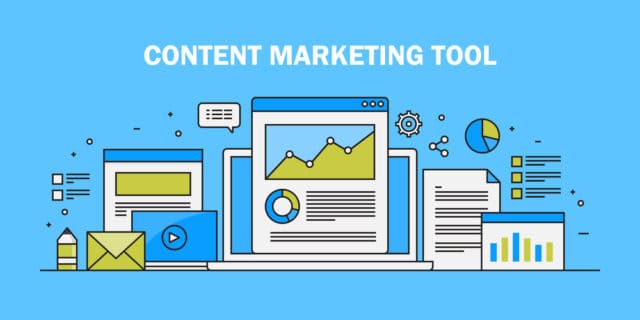
BuzzSumo
BuzzSumo helps you to stay even or stay a notch higher with your competitors.
Special features include:
- It offers content insights and suggestions.
- It shows the most-shared content on social networks.
- It helps you locate influencers and key industry players in any area.
- Advanced keyword search.
- Includes competitor analysis that tracks competitors’ content.
- Provides alerts about a competitor’s new content.
- Recommended for editorial planning and scheduling.
- Excellent for competitor research.
Trello
This is an excellent tool for businesses that undertake a lot of collaborative content work. Trello is specially designed for teamwork and offers all the features for elaborative search volume, cards, lists, and boards that make content research easy.
Special features:
-
- It is a great collaborative tool for writing, posting, sharing, and scheduling content.
- It allows you to leave messages for team members.
- It initiates easy content sharing in one place.
- In demand for its advanced content marketing tools suitable for project management and multiple purposes.
- Especially liked for its editorial calendar tool.
ClickFunnels
This is a great tool especially if you want to fuel the sales funnels. If your focus is to turn leads into sales, this is the tool to create Sales funnels, Membership funnels, Auto-webinar funnels, Hangout funnels, among others.
Special features:
- Offers easy drag-and-drop options.
- Easy to create and convert sales funnels.
- The templates are based on customer behavior and best practices.
- It is a great choice for email marketing and Email integration.
- A/B testing.
Canva
Elevate your photoshop game with this incredible tool. Canva is your ultimate go-to design option for high-quality images and graphic design options.
Special features:
- Offers a wide range of pre-built templates and layouts.
- Provides a plethora of options for content marketing imagery especially designed for Instagram posts, social media images, blog covers, Twitter cover photos, etc.
- Has easy drag-and-drop options.
- Excellent for a layperson.
- Useful for all-purpose design imagery.
HubSpot
Popular among content marketers for its choice of free content marketing tools. This is the all-in-one marketing automation tool for most content marketers.
Special features:
- High-tech CMS
- Free CRM
- Useful popup tools
- Live chat and chatbots
- Effective form builder
- Creates content clusters that improve SEO
- Tracks customers in all stages of the customer journey.
The selling point: Let’s talk about the benefits of content marketing
Creates effective brand awareness
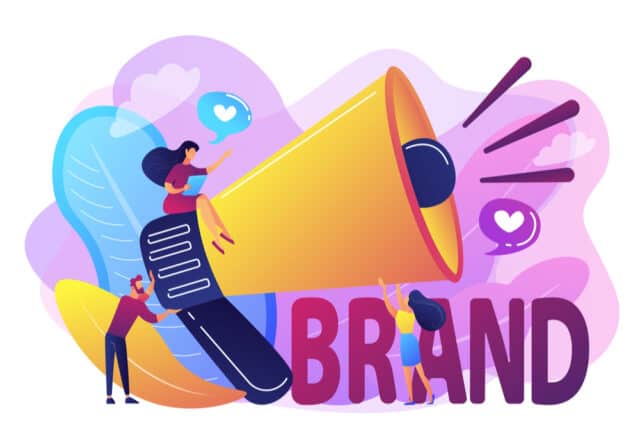
When you put out valuable content consistently, you automatically start building your brand. Wonder how that is possible?
Quality content not only highlights your brand on all media platforms, but your business becomes visible to potential customers who are likely to look at and buy your products.
Furthermore, well-researched content will build an impression about your business being trustworthy and authoritative. The more people you have who rely on your content, the more are their chances to buy from you.
Furthermore, if you provide individuals with valuable content, they will spread it. And voila, you will make yourself an army of loyal brand ambassadors. Eventually, people will recognize your brand based on your content.
Boosts website traffic and conversions
Original and meaningful content directly influences the conversion rate. High-quality content draws people to your website, thus stimulating the number of website visitors. Once they show interest and visit your website, you can inform them about your expertise, products, and services, eventually persuading them to make a well-informed purchased i.e., convert.
Increases visibility through SEO
If you are a content marketer, you know how difficult it is to nail the SEO target. However, with a sound content strategy, you will be closer to hitting the bull’s eye. Content marketing tools help you produce good quality content.
With content marketing, you will add keywords, create unique, data-driven content that will stand out, impress, inspire, inform and entertain your viewers. This will in return generate diverse and targeted website traffic.
As such, content strategy in tandem with a well-developed SEO strategy will bring you long-term ROI and rank your content much higher in search engines. That’s how you score a bull’s eye!
Helps in lead generation

Generating leads is an integral part of a customer’s journey. Through leads, you will attract people to your brand and persuade them to convert into paying customers.
High-value, targeted content generates leads. It is how you attract an audience to view your content. Once you interest them, you secure the chance of a potential purchase.
Content marketers use certain tactics such as placing calls-to-action (CTA) messages in the content, influencing new leads.
Breathes life into your brand through multiple media forms
One of the major advantages of content marketing is that you can win customers through sensory inputs. You are likely to have a diverse customer base who have different preferences. While some are visual learners, others prefer to read, while still others would prefer to watch a video or listen to a podcast.
Well, the good news is content marketing offers media formats for every customer’s needs. You can choose between infographics, photo essays, blog posts, videos, podcasts, interviews, among other media forms.
You will have plenty of scopes to choose from and experiment with delivery channels based on what’s most suitable for your audience.
Saves costs
Content marketing is among the five best survival tactics for your business. Content requires no immediate media placement costs, and you also have the option of creating content in-house.
Furthermore, when you compare content marketing to paid advertisements, video marketing, the content will always win. Content matters a lot.
If we haven’t emphasized it enough, content in all its forms matters, and here’s the cherry on the top—it will keep your costs down.
Builds trust

Content builds brand reputation. If you want to shake up the sales funnel and create a relationship with your viewers—content is your answer! Give them content that answers pain points, is simple and avoids jargon, answers queries, and voila—sooner than you know, you have built customer relationships!
When you offer high-value content, your audience will begin to trust you for advice and recommendations. In return, you will have people who associate your brand with great value. Just like that, you will have influenced buying decisions of your current customer and their family and friends.
The crux of the matter: Let’s observe some challenges you need to overcome
Being patient
You know what they say, Rome was not built in a day and neither is your content strategy. It won’t bring you immediate results. Content marketing is a process, it goes without saying that you will have to leave room to experiment, and learn by trial and error before your strategy starts showing results.
Being creative
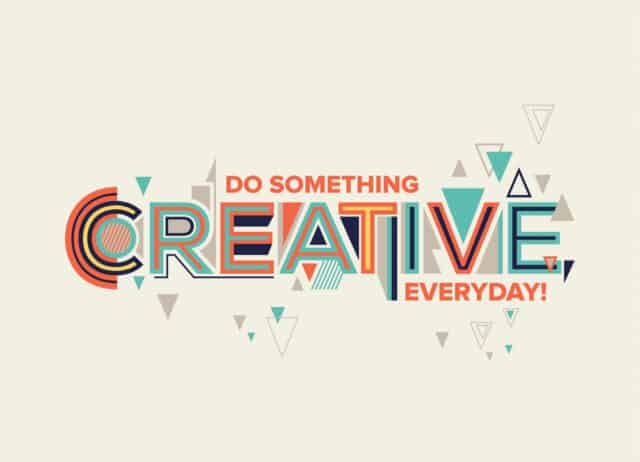
Great minds think alike. When you have so many people who are hungry for content, it is likely that you and your competitor are going to come up with a similar content strategy. Anticipating your competitor’s ideas, putting out original content will help you stay ahead of the game.
Being resourceful and skillful
Content marketing provides a broad scope of media formats to experiment with. You can create content through video, infographics, white papers, etc. This could not only be time-consuming, but it would also require you to outsource or train and develop in-house skills.
Being consistent
Consistency and discipline is the ultimate key to success. We are sure we are not the first ones to tell you this. Keep putting out high-performing content consistently and people will start taking you seriously.
We are not going to abandon you to deal alone with a bunch of challenges. We are generally nice and like to offer our readers a solution. Introducing Content Scoring!
What is content scoring?
The process of content scoring helps you to assess and quantify the potential of your content. It tracks the performance of your individual content pieces.

This is a useful metric for content marketers to prioritize only those pieces with the highest probability of generating leads and conversation rates. You can use the metric of content scoring to evaluate customer engagement and the potential of content before it is published.
How is content scoring useful to you?
- It refines your content.
- It highlights customers’ needs, allowing you to evolve content that resonates with the audience.
- It allows you to measure how each piece of content works. With this, you can establish an engagement metric and scoring criteria. This could either be the number of likes/shares or page views on social media.
- Based on the scoring criteria, you can create high-performing content. For instance, you notice that 1,000 page views are usually bringing you more leads, then you can include all the content that meets this criterion.
- It makes it easy to create high-quality content for your intended audience. In this way, you can set a benchmark for your brand with content scoring.
- Finally, it helps you to monitor customer performance by understanding customers’ expectations and buying stages.

Finally, we’d like to share some exciting news with you. The amount of global online content is skyrocketing! Especially when the pandemic has made it catastrophic for economies to survive, businesses are coping with the competition by leveraging their digital media game. In other words, companies are coming up with solid content marketing strategies, and there is a lot to attract eyeballs in the digital space.
Today, there is a lot you can do to optimize your brand’s content strategy, but your focus should stay on producing high-quality content that your audience values. Only quality content is going to yield you trust, appreciation, and attention over the years.
So, Create Content and Add Value. Period.
Subscribe to our Newsletter
Sign up to receive email updates on new product announcements, exclusive sales and marketing content, special offers on email validation plans, and more.
We send curated content as per your preference and do not indulge in spam!
What would you like to know about
We’re committed to your privacy. TuxMailer uses the information you provide to us to contact you about our relevant content, products, and services. You may unsubscribe from these communications at any time. For more information, check out our privacy policy.
